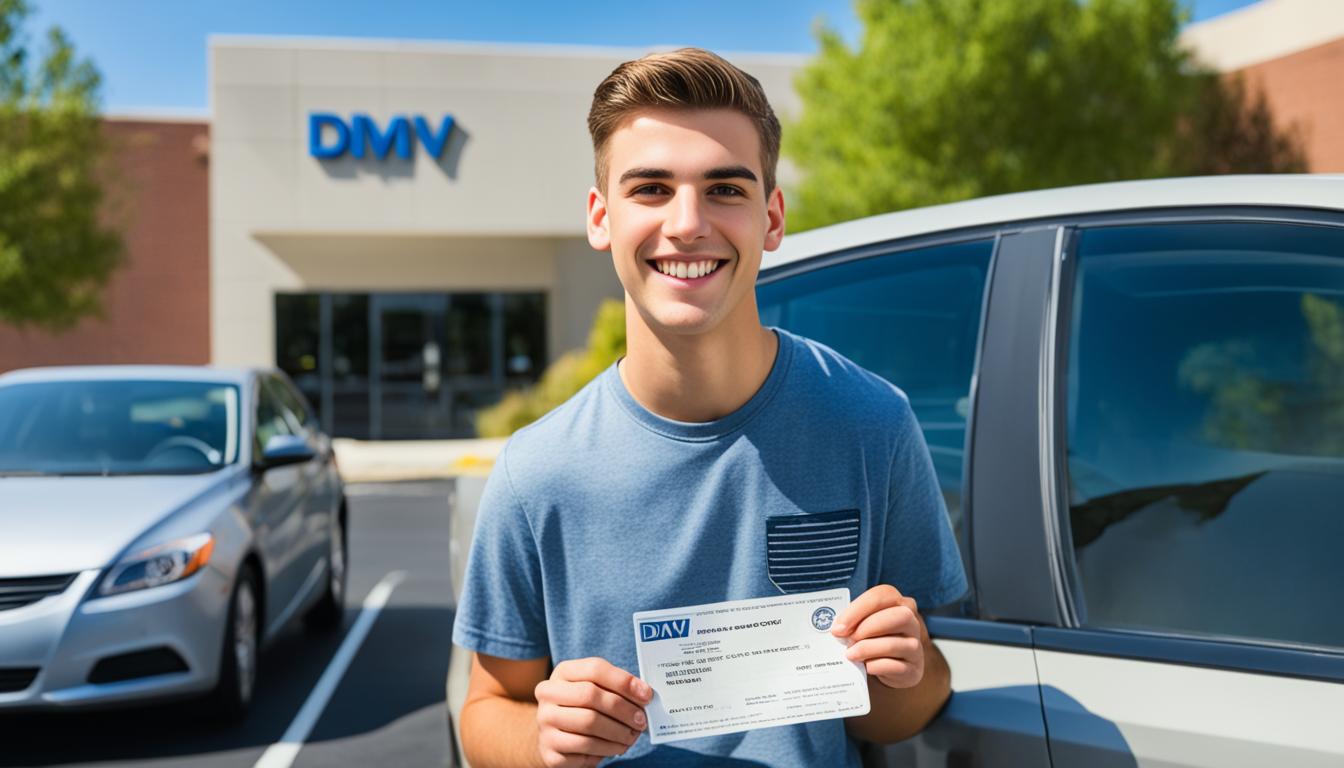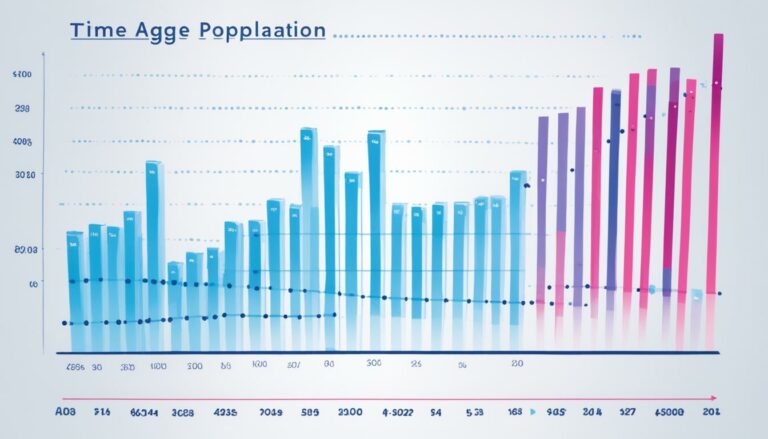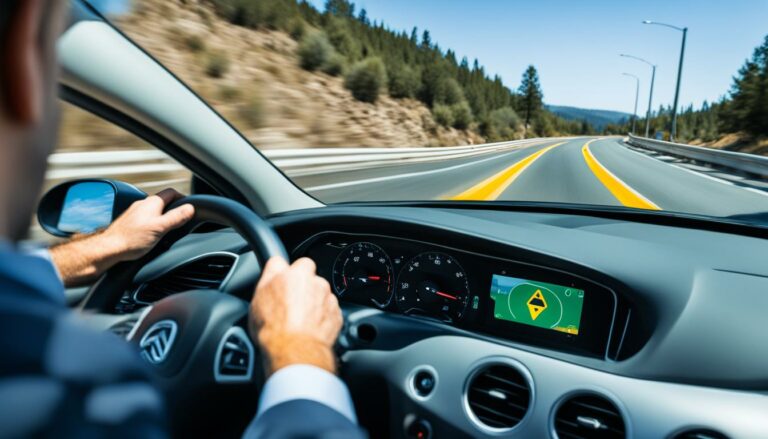Get Your Driver’s License at 17 – Easy Guide
If you’re a 17-year-old looking to get your driver’s license, you may be wondering about the steps involved in the process. Don’t worry, we’ve got you covered. This easy guide will walk you through everything you need to know about obtaining your license as a minor.
The journey to getting your license starts with obtaining a driving permit, which you can apply for when you turn 15. This permit allows you to drive with a licensed driver who is at least 21 years old and has at least one year’s driving experience. To obtain your permit, you’ll need to pass a knowledge and vision test. Once you have your permit, you must hold it for 180 days while completing a driver’s education course and gaining driving practice.
After driving with a conditional license for a year without any violations or at-fault accidents, you can then graduate to a regular driver’s license with no restrictions. It’s a straightforward process, but it’s important to understand each step and fulfill all the requirements.
Key Takeaways:
- Obtain a driving permit at 15 by passing the knowledge and vision test.
- Hold the permit for 180 days while completing driver’s education and gaining driving practice.
- Apply for a conditional license after the permit period, fulfilling all the necessary requirements.
- Drive with a conditional license for a year violation-free to upgrade to a regular driver’s license.
- Ensure you follow the rules and restrictions set by the DMV for drivers under 18.
Beginner’s Permit
To start the process of getting your license at 17, you need to obtain a beginner’s permit. You can do this when you turn 15. With a beginner’s permit, you can drive a car with a licensed driver who is at least 21 years old and has at least one year’s driving experience. This means you’ll have someone experienced by your side to guide you through the learning process. The licensed driver must sit in the passenger seat beside you, ensuring your safety while you gain valuable driving experience.
If you are driving between the hours of midnight and 6 a.m., the licensed driver must be your parent or guardian. This requirement aims to promote responsible driving practices, ensuring that you have a trusted adult accompanying you during late-night hours when visibility and potential risks are higher.
When applying for a beginner’s permit, you must have your parent’s signature on the application. This emphasizes the importance of parental involvement and consent, as they play a significant role in supporting your journey to becoming a licensed driver. Their signature serves as a testament to their commitment in guiding and supervising you as you learn to navigate the roads.
| Key Points |
|---|
| You can apply for a beginner’s permit at 15 years old |
| You must drive with a licensed driver who is at least 21 years old and has one year’s driving experience |
| During late-night hours, your parent or guardian must be the licensed driver accompanying you |
| Your parent’s signature is required on the application |
Why is a beginner’s permit important?
A beginner’s permit serves as a stepping stone towards becoming a responsible and skilled driver. It allows you to gain valuable experience behind the wheel while ensuring the presence of a licensed driver to guide and mentor you. With a focus on safety and supervision, a beginner’s permit sets the foundation for building confidence and competence as you work towards obtaining your full driver’s license.
Conditional License
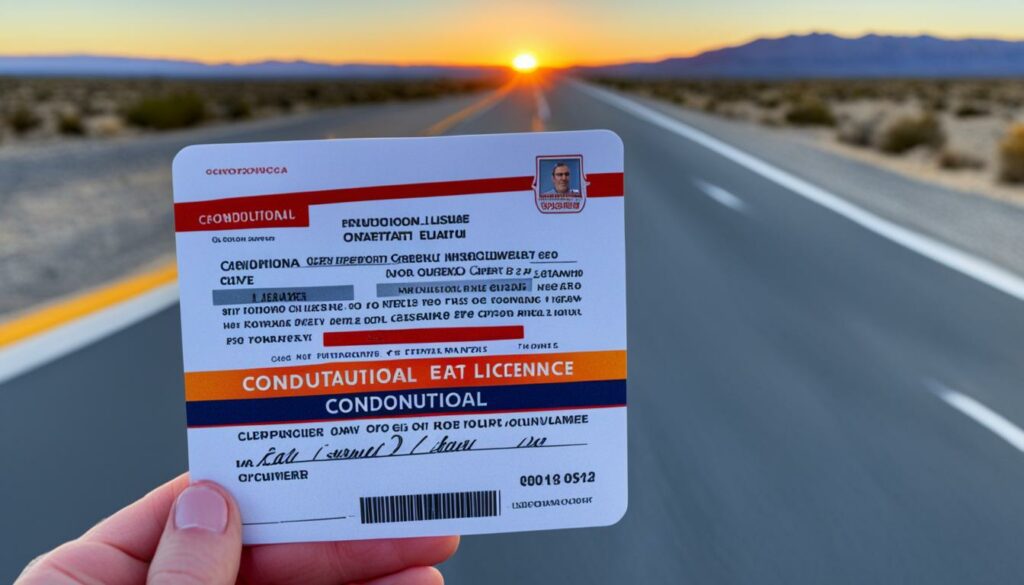
Once you have successfully completed the initial phase of driving with a beginner’s permit for 180 days (approximately six months), you can take your next step towards obtaining a full driver’s license by applying for a conditional license. However, there are specific requirements and restrictions that must be met to qualify for a conditional license.
In order to be eligible for a conditional license, you must be at least 15 years old and less than 16. Along with meeting the age criteria, you will need to provide proof of completion for a driver’s education course and a certificate indicating satisfactory school attendance. Additionally, you should have accumulated a minimum of 40 hours of driving practice, with at least 10 hours completed during darkness. During this practice period, a licensed parent or guardian must supervise your driving.
With a conditional license, you are permitted to drive by yourself during daylight hours. However, nighttime driving is restricted. It is important to adhere to these restrictions to ensure your safety and compliance with the law.
After driving with a conditional license for a year without any violations or at-fault accidents, you become eligible to upgrade to a regular driver’s license with no restrictions. This is an exciting milestone as it grants you the freedom to drive independently without any limitations or conditional requirements.
Special Restricted License
If you are 16 years old and less than 17, you have the opportunity to obtain a special restricted license. This license allows you to experience the freedom of driving independently during daylight hours, with certain restrictions in place for your safety and the safety of others on the road.
To qualify for a special restricted license, you need to meet specific requirements:
- You must have held a beginner’s permit for at least 180 days.
- You must have completed a driver’s education course, which is designed to equip you with the knowledge and skills necessary to become a responsible and skilled driver.
- You must have a certificate of satisfactory school attendance, demonstrating your commitment to both your education and your responsibility as a young driver.
- You must have completed a minimum of 40 hours of driving practice, with at least 10 of those hours taking place after dark. This ensures that you have experience driving in different conditions and become comfortable navigating during nighttime hours.
With a special restricted license, you are allowed to drive alone during daylight hours. However, it’s important to note that night driving is not permitted. This restriction is in place to prioritize your safety, as nighttime driving can present additional challenges and risks, especially for novice drivers.
However, there is an option to obtain a time restriction waiver that allows you to drive alone after dark for school activities, jobs, or vocational training. This waiver recognizes the importance of these activities in your personal and educational development and provides some flexibility within the restrictions.
After driving with a special restricted license for a year and maintaining a clean driving record—free from any violations or at-fault accidents—you will be eligible to upgrade to a regular driver’s license with no restrictions. This milestone marks the transition from a young driver with limited driving privileges to a fully licensed and responsible driver.
Regular Driver’s License
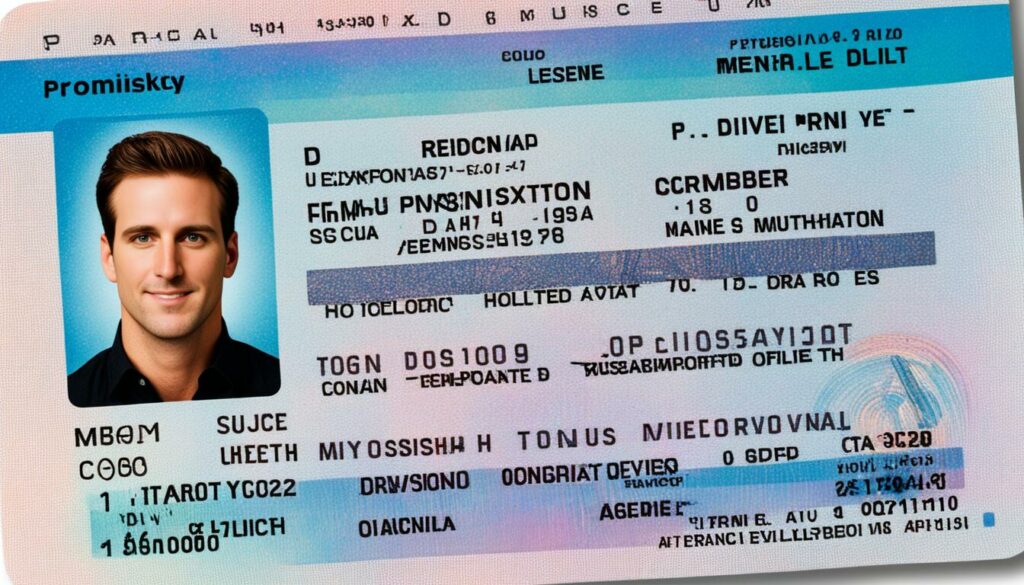
Once you have held a beginner’s permit for 180 days and reached the age of 17, you are eligible to obtain a regular driver’s license with no restrictions. This means you have completed the necessary period of supervised driving and are now ready to drive independently. However, before you can get your regular driver’s license, there are a few requirements you need to fulfill.
Firstly, you need to pass a knowledge and vision test to demonstrate your understanding of driving rules and regulations. These tests assess your knowledge of traffic signs, road markings, and safe driving practices. Passing these tests shows that you are well-prepared to navigate the roads confidently and responsibly.
In addition to the tests, you need to meet certain age and permit requirements. You must be at least 17 years old, and you must have held your beginner’s permit for the required 180-day period. This ensures that you have gained the necessary experience and maturity to handle the responsibilities of driving on your own.
Furthermore, it’s important to note that you still need your parent’s signature on the application for your regular driver’s license. This is to acknowledge their awareness and support of your transition to independent driving.
Once you have met these requirements and successfully completed the necessary tests, you will be issued a regular driver’s license. This license grants you the freedom to drive without any restrictions or limitations. You can enjoy the convenience and independence that comes with having your own driver’s license, allowing you to travel to school, work, and other destinations with ease.
Note: The image above depicts a regular driver’s license. Obtaining this license signifies your readiness to drive independently and without restrictions.
“Getting your regular driver’s license is a significant milestone in your journey as a driver. It represents your progression from a beginner’s permit holder to a fully licensed driver. Take pride in your accomplishment and continue practicing responsible and safe driving habits as you embark on this new chapter of your driving experience.”
Moped License

Getting a moped license is a great way for young individuals to explore independent mobility. Here’s what you need to know about obtaining a moped license.
If you are 14 years old, you can apply for a moped license by taking the vision and knowledge test. This test ensures that you have the necessary understanding of traffic rules and regulations to safely operate a moped.
For those who are at least 15 years old and already have a driver’s license, a separate moped license is not required. The driver’s license exemption allows you to operate a moped without the need for an additional license.
Operating a moped can be an exciting and convenient mode of transportation, especially for short trips. Remember to always prioritize safety and adhere to traffic rules to ensure a smooth and enjoyable ride.
For more information on the moped licensing process and any additional requirements in your state, consult your local Department of Motor Vehicles (DMV) or relevant transportation authority.
If you’re curious about what a moped looks like, take a look at the image below:
Motorcycle License
If you’ve got a need for speed and dream of cruising the open road on a motorcycle, you’ll need to obtain a motorcycle license.
The age requirements for a motorcycle license vary by state, but generally, you must be at least 15 years old to apply. However, keep in mind that if you are under 18, you will need to bring your parent or legal guardian with you to sign the application.
Once you have your motorcycle license, you’ll be able to ride a motorcycle or motor scooter during specific hours. Typically, you can drive from 6 a.m. to 6 p.m., with extended hours until 8 p.m. during daylight savings time. It’s important to note that there may be additional time restrictions and requirements depending on the laws in your state.
If you’re passionate about motorcycles, make sure to get the proper training and meet all the necessary requirements to obtain your motorcycle license. Enjoy the thrill of the ride while staying safe and responsible on the road.
Take a look at the table below for a summary of the age requirements, parent or legal guardian signature, and time restrictions for a motorcycle license:
| Age Requirements | Parent or Legal Guardian Signature | Time Restrictions |
|---|---|---|
| At least 15 years old | Required (if under 18) | Driving hours from 6 a.m. to 6 p.m. (or 8 p.m. during daylight savings time) |
ATV License

All-terrain vehicles (ATVs) provide an exciting way to explore off-road terrains and enjoy outdoor adventures. Before hopping on an ATV, it’s essential to understand the specific requirements and restrictions that come with operating these vehicles. ATVs are typically designed with three or more wheels and handlebars for steering, making them suitable for off-road travel.
However, it’s important to note that age restrictions, safety equipment requirements, and operating restrictions may vary depending on the state you’re in. To ensure compliance and safety, you must familiarize yourself with your state’s ATV laws before operating an ATV.
Age restrictions are put in place to ensure that ATV operators have the necessary skills and maturity to handle these vehicles responsibly. Different states may have different age requirements for operating an ATV, so it’s crucial to know the specific regulations in your area.
Safety equipment requirements are implemented to protect ATV riders from potential injuries and accidents. While the specific safety equipment may vary by state, typical requirements include helmets, goggles, gloves, and appropriate riding gear. Wearing the proper safety equipment is essential to ensure your safety and minimize the risk of injury.
Operating restrictions may include regulations on operating hours, ATV specifications, and riding with passengers. Some states may have designated operating hours for ATVs, which may vary depending on the time of year. Additionally, there may be specific requirements regarding the specifications of the ATV, such as maximum speed limits and noise levels.
Furthermore, riding with passengers may be subject to restrictions. Some states prohibit passengers on ATVs, while others may allow passengers under specific conditions, such as age and seating arrangements.
In summary, it’s important to understand and abide by your state’s ATV laws and regulations. This includes familiarizing yourself with age restrictions, safety equipment requirements, and any operating restrictions that may apply. By doing so, you can have a safe and enjoyable ATV riding experience.
Risk Factors for Teen Drivers
Teenage drivers face a higher risk of being involved in car crashes due to several factors. These risk factors include:
- Inexperience: Teenagers have limited experience behind the wheel, making them more prone to making mistakes and misjudgments while driving.
- Lack of skills: Teen drivers may not have fully developed the necessary driving skills, such as hazard perception and defensive driving techniques.
- Distractions: Teenagers are more likely to engage in distracting behaviors while driving, such as texting, talking on the phone, or interacting with passengers.
- Alcohol consumption: Some teenagers engage in underage drinking and may choose to drive under the influence, impairing their judgment and coordination.
- Speeding: Teen drivers are more inclined to speed, which reduces their ability to react to unexpected situations on the road.
According to the American Automobile Association (AAA), teenage drivers are four times more likely to be involved in car crashes than adult drivers. It is crucial for teenagers to be aware of these risk factors and take steps to minimize them, ensuring their safety as well as the safety of others on the road.
Distracted Driving, Passengers, Speeding, Drunk Driving, and Drugs
Distracted driving, driving with passengers, speeding, drunk driving, and drug use are all major concerns for teen drivers. These behaviors increase the risk of accidents and can have serious consequences.
According to the National Highway Traffic Safety Administration (NHTSA), distracted driving is any activity that diverts attention from driving, such as texting, talking on the phone, eating, or even talking to passengers. It’s important for teen drivers to understand the dangers of distracted driving and to prioritize their focus on the road.
Passengers can also be a significant distraction for teen drivers. The presence of friends or other young passengers can lead to increased risk-taking behaviors, decreased attention to the road, and the potential for peer pressure. Establishing rules and restrictions for passengers can help mitigate these risks and ensure safer driving practices.
Speeding is another prevalent issue among teen drivers. In their eagerness to reach their destination quickly, teens may underestimate the risks associated with exceeding speed limits. Speeding reduces the driver’s ability to react to unexpected situations, increases the distance required to stop a vehicle, and amplifies the severity of collisions. Parents should emphasize the importance of obeying speed limits and set a good example themselves.
Drunk driving and drug use are particularly dangerous behaviors that can lead to tragic consequences. Alcohol impairs judgment, slows reaction times, and affects motor skills, making it unsafe to operate a vehicle. The same applies to drugs, whether they are prescription medications or illicit substances. It is crucial for teens to understand the risks involved and to never get behind the wheel under the influence.
“Driving under the influence of drugs or alcohol is not only illegal but also potentially life-threatening,” says Dr. Sarah Johnson, a leading expert in teen driver safety.
The consequences of these behaviors can be severe. In addition to the potential for accidents and injuries, teens who engage in distracted driving, drive with passengers in violation of their license restrictions, speed, or drive under the influence may face legal penalties, such as fines, license suspension, or even jail time. Furthermore, these behaviors can impact academic eligibility, scholarship awards, and future employment opportunities.
| Behavior | Consequences |
|---|---|
| Distracted Driving | Fines, license suspension, increased insurance premiums, potential accidents and injuries |
| Driving with Passengers | Fines, license suspension, potential accidents and injuries |
| Speeding | Fines, license suspension, increased insurance premiums, potential accidents and injuries |
| Drunk Driving | Fines, license suspension, potential accidents and injuries, criminal charges |
| Drug Use | Fines, license suspension, potential accidents and injuries, criminal charges |
Parents should take an active role in educating their teens about the consequences of these behaviors and enforcing strict rules and expectations regarding safe driving practices. By doing so, they can help their teens develop responsible habits that prioritize their safety and the safety of others on the road.
Conclusion
Obtaining a driver’s license at 17 involves a structured process that includes obtaining a beginner’s permit, completing driver’s education courses, and practicing driving under supervision. By following these steps and taking precautions to minimize risk factors such as distracted driving, speeding, and impaired driving, teenagers can obtain their driver’s license and drive safely on the roads. The active involvement of parents in guiding their teens through the driver’s license process and enforcing rules and restrictions is crucial in ensuring their safety.
Getting a driver’s license at 17 is an exciting milestone for teenagers. It not only grants them increased independence and freedom but also comes with great responsibility. It is important for teens to understand the under 18 driver’s license requirements and adhere to the guidelines set by their state’s Department of Motor Vehicles (DMV). By staying informed and taking the necessary steps, teens can navigate through the teen driver license process smoothly and confidently.
As teens embark on their journey to obtain a driver’s license, it is essential for them to prioritize safety. Distracted driving, speeding, and impaired driving are significant risk factors that can lead to accidents and harm themselves and others on the road. By staying focused, following traffic regulations, and avoiding distractions, teen drivers can contribute to a safer driving environment. With the support and guidance of their parents, teenagers can develop the skills and knowledge needed to become responsible and confident drivers.
FAQ
How can I get my driver’s license at 17?
To get your driver’s license at 17, you need to follow a few steps. First, you need to obtain a beginner’s permit when you turn 15. After having the permit for 180 days, completing a driver’s education course, and driving practice, you can apply for a conditional license. With a conditional license, you can drive alone during daylight hours. After a year with no violations or at-fault accidents, you can get a regular driver’s license with no restrictions.
What is a beginner’s permit?
A beginner’s permit is the first step in getting your driver’s license. You can apply for it when you turn 15. With a beginner’s permit, you can drive a car with a licensed driver who is at least 21 years old and has at least one year’s driving experience. The licensed driver must sit in the passenger seat next to you, except between midnight and 6 a.m., when it must be your parent or guardian.
What is a conditional license?
A conditional license is the next step after a beginner’s permit. To qualify for a conditional license, you need to have a beginner’s permit for 180 days, complete a driver’s education course, and have at least 40 hours of driving practice. With a conditional license, you can drive alone during daylight hours but not at night. After a year with no violations or at-fault accidents, you can get a regular driver’s license.
What is a special restricted license?
A special restricted license is available for 16-year-olds who are less than 17. To obtain this license, you need to have a beginner’s permit for 180 days, complete a driver’s education course, and have at least 40 hours of driving practice. With a special restricted license, you can drive alone during daylight hours but not at night. However, you may obtain a time restriction waiver for school activities, jobs, or vocational training after dark. After a year with no violations or at-fault accidents, you can get a regular driver’s license.
How do I get a regular driver’s license?
To get a regular driver’s license, you need to be at least 17 years old and have had a beginner’s permit for 180 days. You also need to pass a knowledge and vision test. Your parent needs to sign the application with you. With a regular driver’s license, you can drive independently without any restrictions.
Do I need a separate license to operate a moped?
If you are 14 years old, you can apply for a license to operate a moped by taking the vision and knowledge test. If you are at least 15 years old and have a driver’s license, you do not need a separate moped license. Having a driver’s license exempts you from needing a moped license.
How can I get a motorcycle license?
To obtain a motorcycle license, you need to be at least 15 years old. If you are under 18, you need to have your parent or legal guardian sign the application with you. With a motorcycle license, you can drive a motorcycle or motor scooter from 6 a.m. to 6 p.m. (or 8 p.m. during daylight savings time). Additional time restrictions and requirements may apply based on your state’s laws.
What are the requirements for an ATV license?
All-terrain vehicles (ATVs) have specific requirements and restrictions that vary by state. These vehicles are primarily designed for off-road travel. Age restrictions and safety equipment requirements depend on your state. Some states have additional ATV laws regarding operating hours, equipment requirements, and riding with passengers. It’s important to be familiar with your state’s ATV laws before operating one.
What are the risk factors for teen drivers?
Teen drivers are at a higher risk of being involved in car crashes due to their inexperience, lack of skills, distractions, alcohol consumption, and speeding. According to the American Automobile Association (AAA), teenage drivers are four times more likely to be involved in car crashes than adult drivers.
What are the consequences of distracted driving, driving with passengers, speeding, drunk driving, and drug use for teen drivers?
Distracted driving, driving with passengers, speeding, drunk driving, and drug use are major concerns for teen drivers. These behaviors increase the risk of accidents and can have serious consequences. Consequences can include the loss of driving privileges, legal penalties, and even the loss of academic eligibility and scholarship awards.
How can I ensure the safety of teen drivers during the license process?
By following the steps to obtain a license at 17 and taking precautions to minimize risk factors such as distracted driving, speeding, and impaired driving, teens can obtain their driver’s license and drive safely. Parents play a crucial role in guiding their teen through the driver license process and enforcing rules and restrictions to ensure safety on the road.

